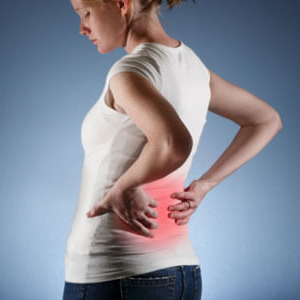Back Pain
Physiotherapy for Back Pain
 Your back and spine carry an enormous amount of load connecting to your extremities and responsibility for your nerve centre which runs through your spine connecting your head to your toes.
Your back and spine carry an enormous amount of load connecting to your extremities and responsibility for your nerve centre which runs through your spine connecting your head to your toes.
If your body is out of line for whatever reason the pain often presents in your back. Misalignments often occur due to uneven load, certain muscles being stronger than other, (often in dominant right handed or left handed people) tight muscles in one side of the body causing strain in another part or misalignments due to other illness, joint deterioration due to ageing or improper posture or lifting techniques.
For many people these days, working a sedentary job where a lot of time is spent in one position can also be a great cause of back pain, either from underuse of muscles causing tightness or compression of the vertebrae affecting the sciatic nerve.
Through our spine runs our central nervous system. Here, we often see pain occur when a misalignment in the vertebrae in the lower back affects the sciatic nerve. Sciatic pain can be very debilitating and can affect your ability to walk, sit, lift or bend at the waist.
Physiotherapy for Sciatic Pain
The sciatic nerve is the longest nerves in the body, running from the base of the spine all the way down the back of the legs. Sciatic pain is usually caused by compression of the nerve root at the point where it leaves the spine. Damage to the nerve can also cause pain.
Pressure on the nerve can cause localised pain as well as pain down the leg that can present as tingling, burning, numbness or shooting pains when standing up. Sciatic pain can be both intermittent and ongoing depending on the severity of the condition. It generally affects one side of the body at a time. The good news is that most sciatic pain can be managed and permanent nerve damage is rare.
In younger and early middle-aged people, the most common cause of sciatic pain is from a herniated or prolapsed disk causing pressure on the nerve.
In elderly people, degenerative conditions such as osteoarthritis- the degeneration of the vertebral disks in the lower back or by narrowing of the spinal canal called spinal stenosis can cause localised pressure.
Other causes can be:
- other bone diseases
- localised injuries to the lower back from poor lifting technique
- Poor posture
- Wearing high heels for extended periods of time
- Piriformis syndrome (tightness of the piriformis muscle in the buttock that compresses the sciatic nerve)
Diagnosis and Treatment for Sciatic Pain
Treatment for sciatic pain will initially aim to reduce the pain and any other associated presentations such as shooting, tingling and numbness.
Our team will focus on locating and alleviating the source of the pressure on the nerve with a combination of treatment methods. These may include mobilisation, massage, dry needling (to settle overactive muscles), stretching of the muscles or using an ultrasound machine to return muscle function to normal.
After the initial symptoms have been managed, advice, prescribed exercises and stretches may also be given depending on the cause of the sciatic pain. Often if the sciatic pain is caused due to poor posture or incorrect lifting technique- retraining techniques as well as stretches to prevent muscle tightness may be given. Strengthening exercises to prevent misalignments occurring again may also be used to manage sciatic pain going forward.
Want to Learn More?
Contact us today to get started! Saturday appointments are available.
